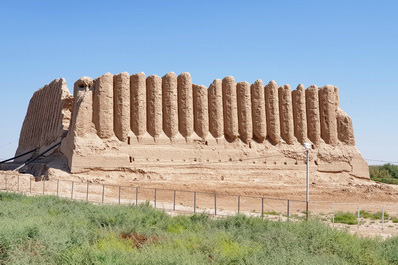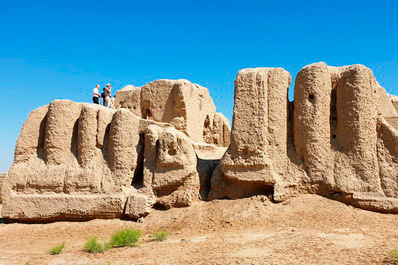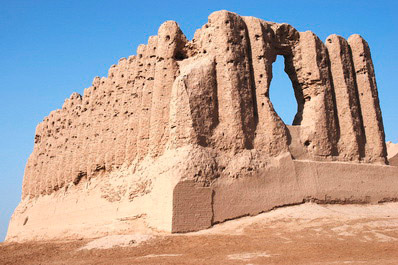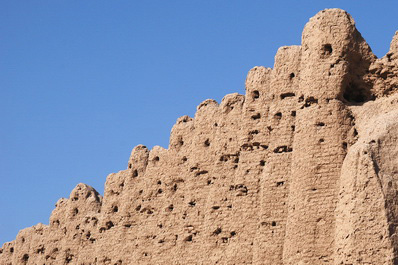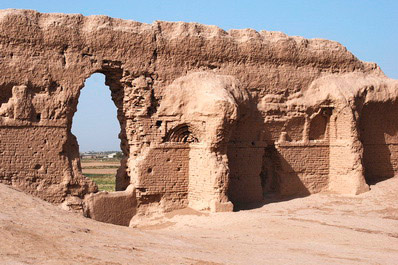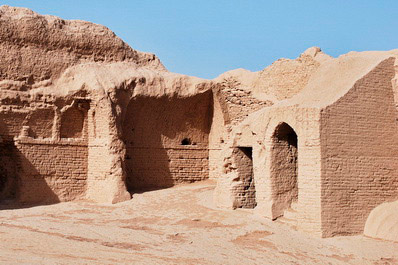Kyz Kala, Merv
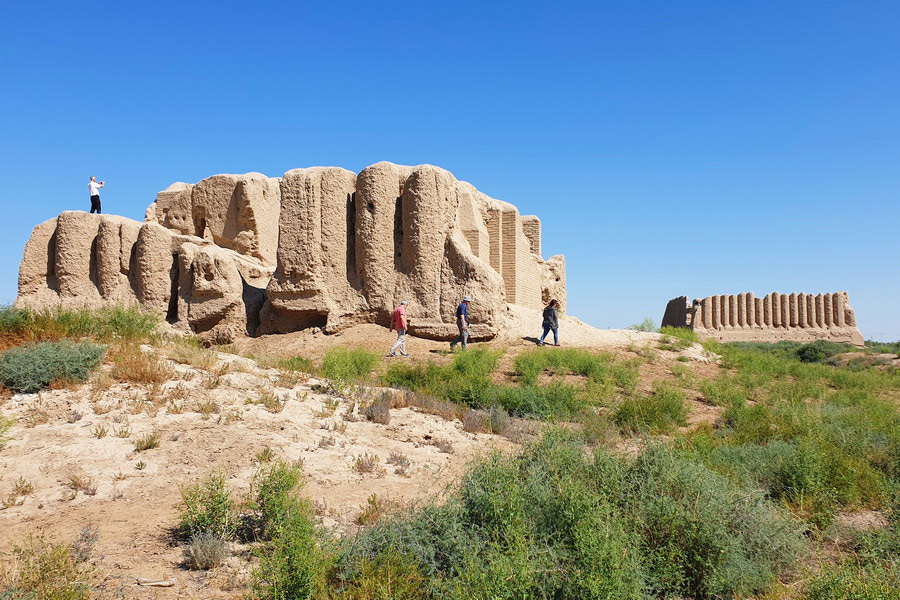
The Great and Little Kyz Kala are two fortresses in the western part of Merv, built in the 8th and 9th centuries as suburban fortifications or estates for the city's ruling elite. The Great Kyz-Kala is much better preserved, while the Little Kyz Kala is largely in ruins. Today, these fortresses are UNESCO World Heritage Sites and are one of the iconic landmarks of Merv. The name "Kyz Kala" translates from Turkic as "Maiden Fortress".
The Great Kyz Kala is characterised by its striking corrugated walls and measures 40x35 metres. Originally it had two floors with five rooms, but now only the foundations remain. The parts of the fortress that required the most strength were built with fired bricks, while the rest were made of mud and raw bricks. The corrugated outer walls of raw brick have survived well due to their slight inclination, which has prevented them from crumbling. The fortress was once surrounded by an outer wall with corner towers, forming a courtyard of several hectares.
The Little Kyz-Kala, located 140 metres to the south, is about four times smaller, measuring 20x20 metres. It also had two floors and was built of the same materials - burnt brick, raw brick and mud. Unfortunately, the Little Kyz Kala has been severely damaged over the last thousand years, and today only a few walls and internal corridors remain. It does, however, offer a great view of the larger fortress.
Recent archaeological research in Merv has helped to determine the approximate age of the Kyz Kala fortresses, placing their construction at the end of the 8th or beginning of the 9th century, during the period when Merv was under the control of the Caliphate, ruled by the Abbasid dynasty. At that time, Merv was one of the most important centres of science and culture in the Islamic world. The Kyz Kala fortresses were located just 450 metres from the south-western edge of the Sultan-Kala fortress wall, where the population of Merv was concentrated. These fortresses were active for many centuries, regularly maintained and rebuilt. It is believed that they were destroyed in the early 13th century when Merv was conquered by the Mongols under Tolui Khan.
After centuries of neglect, Kyz Kala was rediscovered in the late 19th century by the Russian explorer and scientist Professor Valentin Zhukovsky. In the mid-20th century, a major archaeological expedition led by the renowned archaeologist Mikhail Masson uncovered many early medieval artefacts at Kyz Kala and throughout Merv. Further excavations were carried out in 1997 and 2011, using advanced technology to reveal even more about the history of this great city. However, some questions about the history of Kyz Kala and Merv remain unanswered.
During the excavations, archaeologists discovered gold, silver and copper coins from the time of the Arab Caliphate, which helped to date the fortresses. Other finds included terracotta figurines, painted ceramics, bronze jewellery and a variety of artefacts. Among the most interesting finds were a glazed bowl depicting a female warrior and a bronze cosmetic spatula with a relief image of the goddess Anahita. These items confirmed that Kyz Kala was inhabited by the wealthy elite of Merv. Today, many of these artefacts can be seen in the Mary History Museum and the State Museum of Turkmenistan in Ashgabat.
The Great and Little Kyz Kala still hold many secrets about life in Merv, and future archaeological expeditions may reveal more answers to historians' questions. Today, Kyz Kala is one of the most impressive historical monuments in Turkmenistan and is included in all tours of Merv. Its unique architecture and ancient history are sure to leave a lasting impression on all visitors.

